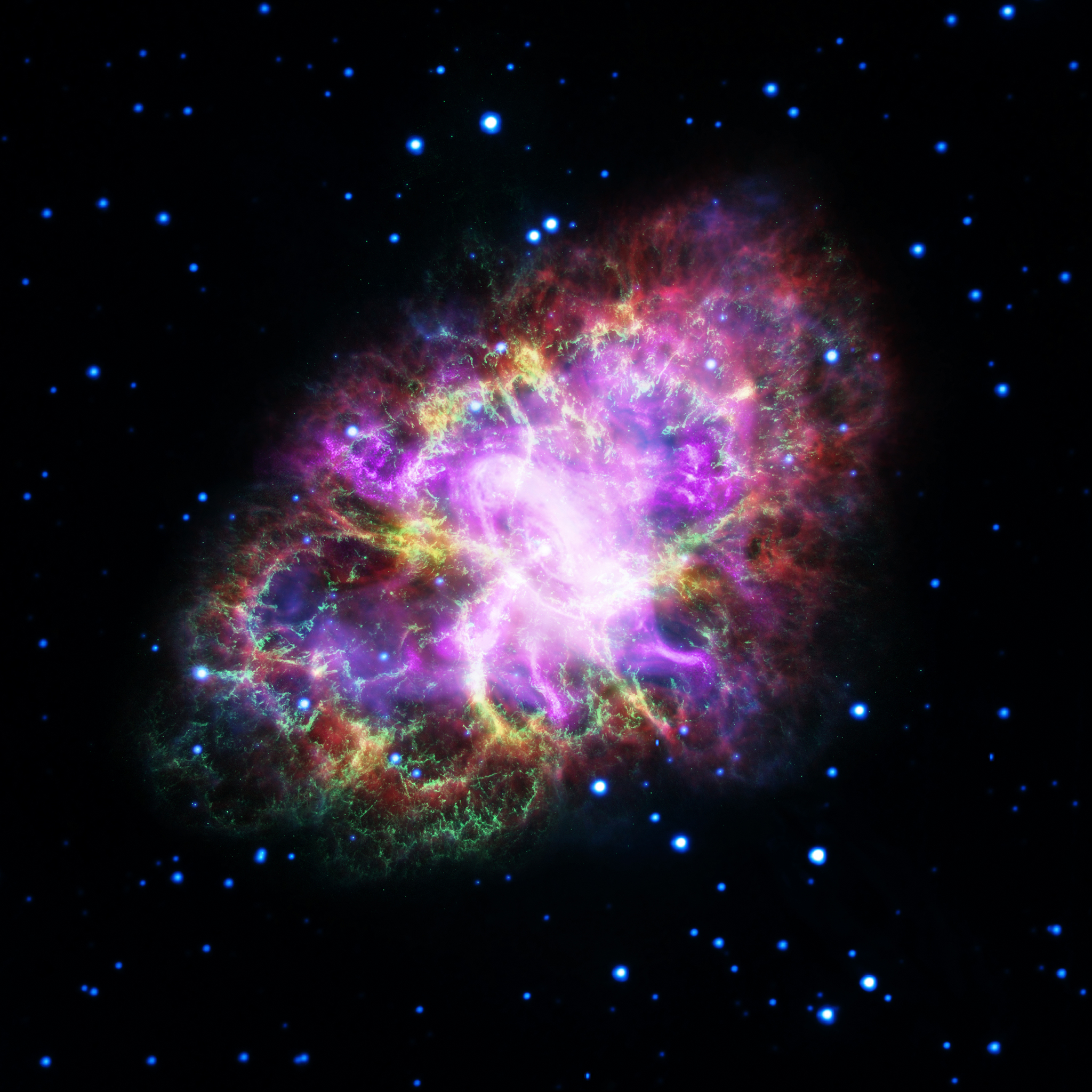The Crab Nebula is the
remains of an exploded star. The star exploded almost a thousand years ago (1054). The
explosion was bright enough to be viewed during the day for 23 days according to Space.com . It is popular target
for astrophotographers. The total imaging time is 20 hours in HaRGB. Preprocessing was done in CCDStack2 and post processing in PixInsight. Image processing has been
challenging. PixInsight offers so many options which provides solutions as well as problems. I’m
slowly climbing the learning curve. In this image, I wanted to focus on star
color and detail in the nebula. Stay tuned for more images.
Update: This is an image of the Crab that is the current APOD. It's a collection of photos from Hubble, Spitzer, and an array of other devices used to detect radio waves, infrared, ultraviolet, etc. If you look closely at the center of the nebula, the pulsar is visible. For more information on that check out this link https://apod.nasa.gov/apod/astropix.html
Update: This is an image of the Crab that is the current APOD. It's a collection of photos from Hubble, Spitzer, and an array of other devices used to detect radio waves, infrared, ultraviolet, etc. If you look closely at the center of the nebula, the pulsar is visible. For more information on that check out this link https://apod.nasa.gov/apod/astropix.html
Update: Check out this 10 year time lapse movie of the Crab Nebula expanding. It's the most incredible thing I've ever seen!! https://www.astrobin.com/full/327338/0/



The ten year time lapse blew my mind. I never knew something like this existed anywhere. We all know how massive space is, but you can clearly see the nebula is expanding quickly and it won't be long in galactic time it will dilute itself into nothingness. Thanks for the link George, it is as you said, incredible!
ReplyDelete